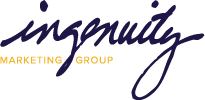
A longtime engineering and architectural firm needed to change its brand positioning strategy. Historically, it was perceived as only serving clients in a certain region, but the firm was gaining a national presence. Leaders also spoke of being overlooked for certain services even though they now offered a full-service solution.
This is a good problem to have because a strong, historic brand position is hard to shake once established. It’s also a bad problem because the full potential of this firm is not recognized by people who can offer new business. If segment leaders don’t change how they talk about the firm in all aspects of marketing, their firm’s former brand will persist.
If your firm is limited by old perceptions about your capabilities, then your brand positioning strategy needs to change. Otherwise, you can miss out on new leads and projects.
Ask the Market about Your Brand
Research is a good first step. Talk to your clients and project partners about why they work with you and what you are best known for. Investigate how much they know about other services, disciplines or locations that you serve. We recommend up to 20 interviews among your best contacts or three to four interviews per market segment/discipline to get a good cross sampling. Interviews are better than a survey because you can ask more detailed questions to determine gaps in perception about your firm’s strengths and capabilities.
Sometimes your brand perception erodes because longtime project partners or clients experience a change in leadership through retirements or mergers. Make sure to interview those leaders and then follow up with a capabilities conversation.
Analyze all the interviews for common themes, such as lack of knowledge about (1) locations you serve (2) special skills (3) approaches or outcomes that are unique to your team. Make a list of what you are known for better than anyone else (your current brand), and make another list of what you want to be known for.
Clarify Target Clients and Growth Opportunities
Your new brand position should always be aligned to business goals. Identify your target clients and revenue goals as part of business planning. This will help you allocate a budget for strategic marketing spend and business development efforts.
Let’s say you want to increase awareness and revenue for your firm’s surveying services, but the market perceives your firm as mainly offering structural engineering. Practically speaking, your brand positioning strategy should include new messaging about your team’s skills and unique approaches in surveying.
The market already knows that you are a go-to firm for structural engineering. Let that branding stand on its merits and history for now. Focus your brand positioning strategy on the gaps and best kept secrets of your surveying team and services — the capability that fewer people know about, but should.
Create Your New AEC Brand Messaging
What is brand messaging? It’s not really about your surveying services. Brand messaging lets people know how you deliver surveying services in a way that is unique to your firm…how you promise a certain level of quality. For example, your conversation about surveying services would address the outcome that people can expect when working with you: easy scheduling or team collaboration or quick results using new technologies.
Build awareness that you offer a service, but then take it a step further with branding messages that identify why your team is the best choice.
You can also create brand messaging around a geographic location that you serve. Emphasize your connections to local project partners or how fast you can mobilize your team. What is the difference you deliver that will help you stand out in this location? That messaging will make you memorable and will help you change a limited perception about your firm.
What’s Next?
After conducting your branding research and creating competitive brand messaging, build a marketing plan that gets the word out about these expanded markets, locations and services. Add your new branding messages into your proposal copy as well as your website content, advertising and sponsorship descriptions. Start using this new messaging in client and sales conversations, too. Create talking points for leaders to use in prospecting discussions or presentations.
In six months to a year, check in with your clients and project partners. What is their perception of your firm now? Has it changed and evolved through your brand positioning strategy? The proof of change should be clear in new discussions and opportunities that you didn’t have before.
More:





